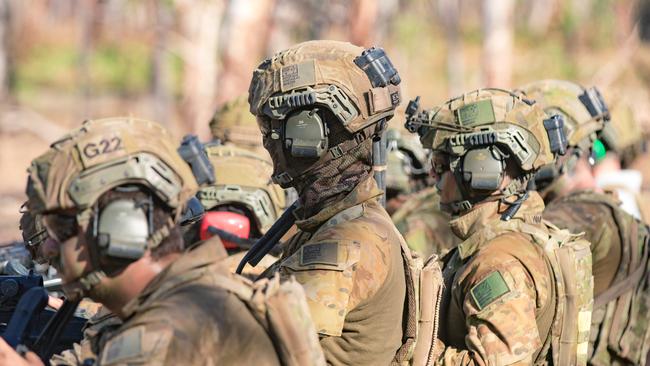Defence reserves ‘understrength’; to be trained like Ukrainian fighters
A new approach to preparing the nation’s part-time soldiers would be modelled on a program to train Ukrainian nationals to fight Russian forces, allowing the ADF reserves to ‘rapidly scale’ in the event of a ‘crisis’.

A new approach to training Australian Defence Force reservists would be modelled on a five-week program to train Ukrainian nationals to fight Russian forces, allowing the ADF reserves to “rapidly scale” in the event of a “crisis”.
A 78-page strategic review of the ADF reserves – the nation’s part-time soldiers, who represent 33 per cent of the total ADF workforce – found it was “understrength”, with a recruitment shortfall of more than 1070 personnel forecast for 2023-24. It noted that future recruitment targets would not be met “without significant reprioritisation and resource allocation”.
As a result, the government has vowed to improve the recruitment and retention of reservists, while also battling to turnaround a workforce crisis that has left the ADF understrength by 5000 personnel, threatening the rollout of new capabilities including promised nuclear-powered submarines.
As Australia enters the most complex strategic environment since WWII, the review says that, increasingly, ADF capabilities would not be distinguished by full-time (ADF) or part-time forces (ADF reserves) but only by the ability of the reserves to provide “an expansion base for the ADF in times of crisis”.
“While the need to address the shortfall of permanent ADF workforce is understood, there is a need to ensure that the importance of the part-time workforce of the ADF is acknowledged and a contemporary Employee Value Proposition is developed and delivered as a matter of urgency,” the review said. Conducted between December 2023 and April 2024, the review also recommended the ADF Reserves adopt a “minimum essential training approach” for non-technical entrants to speed up their entry, which would be based on an approach taken by the Australian Army’s training of Armed Forces of Ukraine recruits.
In 2023 alone, Australian rotations trained more than 1200 Ukrainian soldiers in the UK under Operation Kudu. Ukrainian recruits graduate following an intensive five-week training course that teaches basic war-fighting skills, first aid, explosive hazard awareness and marksmanship.
The Albanese government has agreed to this “minimum essential training” model as part of the review and, once implemented, Australian reserves would ideally take no more than six weeks for initial training where it has previously taken up to two years.
“Operation Kudu (for Armed Forces of Ukraine recruit) provides a useful reference point in how to streamline and focus training to achieve priority capability effects in the most efficient way possible. It also highlights what critical foundation skills cannot be bypassed,” the review said.
The review also recommended redesigning the reserves workforce to better integrate it with the ADF, including a larger “operational” workforce.
The government has committed to recruiting, by 2030, 1000 more “operational level” personnel who would focus on delivering “short-notice capacity”. The government will also develop a specialised reserves cyber workforce as the skillset will be increasingly needed “in time of crisis”.
The review also found many reservists are employed in essential civilian roles that will exempt them from call-out in the case of an emergency, and the government needed to determine in which cases the reserves’ roles trumped their civilian employment, calling it a “significant and unquantified risk” to the ADF.
The Albanese government agreed to 13 of the 14 recommendations in the review, to be implemented no later than the end of 2025.
In a foreword to the report, Defence Minister Richard Marles said reservists play an important role in addressing Defence’s “workforce crisis”.
He said the “structure, shape and role” of the reserves needed to adapt to “ensure the reserve workforce complements the total Defence workforce and provides the expansion base for the ADF in times of crisis”.
The reservist workforce was more than 41,700 in March, with about 32,300 providing service. Separately, the estimated ADF workforce will be 58,600 by June 30 next year, against a requirement of 63,597.



